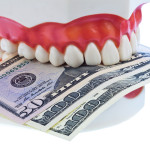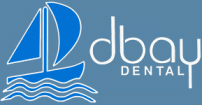(Or why does it seem cheaper to go overseas?)
Many people ask this, because understandably they are unaware of what goes on “behind the scenes” at the dentists. (For the record, we make sure our fees at DBay Dental are in line with, or below, the industry average). Quite simply, dentistry is a professional service that’s both an art and a science. Your oral health is a vital part of your overall health and appearance. For instance, untreated gum disease is linked to heart disease – would you choose a heart specialist based on price? It’s been conservatively estimated that in general up to 80% of the cost of your treatment goes toward the expense of delivering the treatment. As you’ll see, going to the dentist is more like a trip to the hospital, than a trip to the GP’s. Here are some things to consider…
So how do the costs add up?
No government subsidy
We often hear “Why does it cost more than going to my GP? “. Well, unlike doctors, there is no Medicare rebate for dentistry, so (with a few exceptions) the government does not subsidize any of your dental treatment.
Equipment
A dental practice is like a mini-hospital, with each surgery similar to an operating theatre. Special equipment and fittings and strict infection control requirements all add to the expense. For instance, that comfortable reclining dental chair costs in excess of $35,000, and then there’s a number of pieces of equipment you can’t see, for example: a medical grade compressor to run an exhaustive amount of drills and scalers, special lights, a suction unit, digital x-ray processors and more. And then there’s the cost of maintaining all this equipment, which must be serviced, and Performance Qualified every 12 months.
Infection control
Complying with Australian standards for infection control is costly too. In Australia all instruments require sterilisation or must be ‘single-use’ items. The practice has to have a dedicated Instrument Reprocessing Centre (unless it outsources its sterilisation) with an ultrasonic bath and an autoclave unit as a minimum. There are also a whole host of ‘single-use’ disposable items to prevent cross-infection, such as plastic covers, disposable suction tips, etc. Including the cost of additional staff required to undertake the infection control regime, the cost per patient for infection control alone has been estimated at $30 per treatment. Still going…
Qualified staff
It takes a minimum of three qualified employees to look after every patient. Think about your last visit to the dentist: there is a receptionist, a dentist, and a dental assistant. In Australia your dental assistant must hold a minimum of a Cert III in Dental Assisting, and many hold a Cert IV, while a dentist studies at university for an average of five years to become qualified. Additionally, we must pay our qualified staff award rates in wages and superannuation. The practice certainly doesn’t run itself!
Dental materials
Then there is the consideration of the materials used during your treatment. Dental materials are highly specialised and sophisticated substances that are costly to source, shape, sterilize and prepare to be permanently fixed in your mouth. These include filling materials, anaesthetics, dental adhesives, impression material, and much more. Quite simply, they are costly because they are of extremely high quality. But wait, there’s more…
TGA approval
In Australia, all dental materials must comply with the TGA (Therapeutic Goods Administration). This means that the materials we use are of a guaranteed high standard.
The dental laboratory
Sometimes your dental care will require items such as crowns, veneers, bridges, dentures, splints, and mouthguards – even whitening trays. A dental prosthetist or a dental technician generally fabricates these at a dental lab. We only use Australian dental laboratories to make your dentures or crowns and bridges that only use TGA approved materials. (Your lab job does not go overseas to be made in an unregulated lab!) The lab charges the dentist for these items and this has to be passed on to the patient in turn. And we’re not finished yet! …
Costs of compliance
As a registered healthcare provider, your dentist has a great deal of responsibility in caring for your dental health. There are considerable costs just to practice dentistry: each dentist is required to be registered with the Dental Board of Australia and the Australian Health Practitioner Regulation Agency (AHPRA); they must hold X-ray licenses, and numerous insurances as well. If your dentist is accredited (DBay Dental is proud to be one of the few accredited practices in Australia!) then they will have invested a considerable amount of time and money in ensuring the provision of excellent dental care and continuous quality improvement within the practice environment. And finally, in Australia your dentist is required to undertake 20 hours per year of Continuing Professional Development. That means additional study to maintain and improve their knowledge, skills, and performance of oral health care.
Say Aah! (Now I get it!)
So it’s understandable that our patients don’t see the costs and hard work involved in providing quality dentistry, and that’s how it should be. The entire team works very hard to ensure that your appointment is as relaxed and pleasant as possible. We make sure all procedures are carried out smoothly and we don’t need to involve you in all the hard work that goes on behind the scenes. So rest assured there is a great deal that goes into delivering you with high quality dental care, and that at DBay Dental you are always in safe hands.

